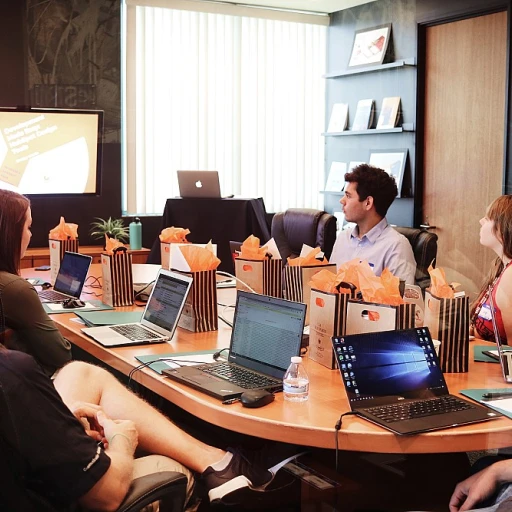The Importance of Continuous Learning in the Workplace
Recognizing the Value of Non-Stop Education in Professional Settings
In today's rapidly evolving work environment, the concept of continuous learning is no longer a mere option—it’s an imperative. With technological advancements and industry shifts occurring at breakneck speed, the skills that were relevant just a few years ago may quickly become outdated. Therefore, acquiring new knowledge and upgrading skills has become essential for both organizational and personal success.
Embracing ongoing education in the workplace isn't just about keeping up with changes. It's about gaining a competitive edge, fostering innovation, and ensuring growth. Organizations that invest in continuous learning create a competent workforce that can adapt to changes smoothly and efficiently. Employees benefit from career growth and job satisfaction, contributing to a more motivated and productive workforce.
Furthermore, continuous education sets the foundation for creating a vibrant workplace culture where learning is embedded in the everyday workflow. It encourages collaboration, communication, and engagement among team members, all of which are crucial for organizational development. In the coming paragraphs, we will explore how establishing such a culture, formulating effective training programs, and leveraging management roles can significantly enhance development initiatives. To read more about strategies for success in implementing continuous learning, check out our implementing continuous learning strategies for success.
Creating a Culture of Continuous Learning
Establishing a Learning-Friendly Environment
In our ever-evolving professional landscape, creating an environment that encourages perpetual growth is crucial. Continuous learning in the workplace not only equips employees with up-to-date skills but also fosters innovation and creativity. Leaders aiming to cultivate such an environment must prioritize open communication, encourage feedback, and support risk-taking. A learning-friendly environment begins with modeling learning behaviors. Managers and team leaders should actively seek feedback and demonstrate a willingness to learn from their own experiences. This sets a precedent and encourages employees to follow suit, thus forming a foundation for a strong learning culture.Encouraging Curiosity and Open Communication
For a learning culture to thrive, ensuring an open communication channel is essential. Employees should feel free to ask questions, share knowledge, and express their ideas without fear of criticism. Open dialogue not only facilitates knowledge sharing but also builds trust among colleagues, making learning a collaborative process. Curiosity should be actively encouraged by management. When employees question existing processes and propose new ideas, it demonstrates engagement and can lead to process improvements and innovation. Companies can stimulate this inquisitive nature by providing regular training sessions, promoting cross-departmental projects, and celebrating creative problem-solving.Providing Resources and Support
To cultivate a sustainable culture of continuous learning, offering resources and support is indispensable. Organizations can achieve this by investing in access to online courses, arranging workshops, and featuring guest speakers who can provide fresh insights. Flexible learning opportunities that adapt to the unique needs of each team member empower employees to enhance their skills in a manner that suits their schedules and career aspirations. Furthermore, mentorship and coaching programs can guide employees towards their personal and professional development goals. These programs create a nurturing environment where employees are both learners and teachers, fostering a reflective and inspired workforce. All these efforts come together to create a robust culture where continuous learning is not an obligation but an exciting journey towards success and fulfillment.Training Programs and Learning Opportunities
Diverse Training Programs: Essential for Skill Enhancement
In today's rapidly evolving business landscape, empowering employees through diverse training programs has become pivotal for sustaining a competitive edge. Different organizations cater to this need by offering various learning opportunities, each designed to address unique requirements that may arise in the workplace. Whether it’s through on-the-job training, e-learning platforms, or external seminars, it’s crucial to structure these programs in a way that they resonate with the employees’ roles and career goals. One effective approach is to blend formal and informal learning opportunities. Formal programs, like workshops and certification courses, provide a structured environment that often leads to recognized qualifications. On the other hand, informal approaches such as peer learning groups, mentorship arrangements, and interactive sessions allow employees to learn in a more relaxed setting. This diversity not only helps in skill enhancement but also in boosting employee motivation and engagement. Emphasizing adaptability, organizations must regularly update their training modules to reflect industry trends and technological advancements. By doing so, they ensure their workforce remains at the forefront of innovation and is well-equipped to tackle new challenges. Moreover, identifying key skill gaps and tailoring training programs to bridge these gaps fosters professional development while aligning individual objectives with broader organizational goals. Creating an environment with a plethora of learning opportunities requires a commitment to cultivating a learning culture. Companies can initiate programs that revolve around self-paced learning, allowing employees to take charge of their development. Encouraging participation in cross-departmental projects and networking events also enables employees to expand their horizons and apply their newly acquired skills in diverse settings. To explore more on how to instill such a culture in your workplace, refer to the detailed insights available at fostering a learning culture within organizations. Embracing an inclusive approach to employee development not only equips your team with relevant skills but significantly contributes to organizational success.The Role of Management in Employee Development
Guiding the Path: Leadership's Essential Role
In the ever-evolving landscape of the workplace, fostering a culture where continuous learning thrives relies heavily on the role of management. The leadership team is pivotal in setting the tone and direction for continuous development, influencing both individual and organizational growth.
Managers and leaders are not only responsible for providing resources and opportunities for learning, but also for nurturing an environment that values and encourages the pursuit of new skills. By actively participating in development initiatives themselves, managers can lead by example, showing their teams that learning is not just important but essential to success.
Employee development programs, whether formal or informal, can significantly enhance skills and motivation within the team. However, the effectiveness of these programs can hinge on the direct involvement of management. Leadership should regularly engage with employees to identify learning gaps and aspirations, aligning them with the organization’s goals and the available learning opportunities discussed earlier.
Regular feedback and performance reviews are tools that leaders can use to facilitate career advancement and personal growth. Providing constructive feedback helps employees understand their development areas and encourages them to take ownership of their career paths. Furthermore, recognizing and rewarding learning achievements can boost morale and reinforce the value placed on continuous education within the organization.
In conclusion, for an organization to truly embrace continuous learning, it must begin with proactive and engaged management. Leaders need to champion the cause, integrate learning into the fabric of the organization, and recognize the immense benefits it brings to both employees and the company as a whole.












